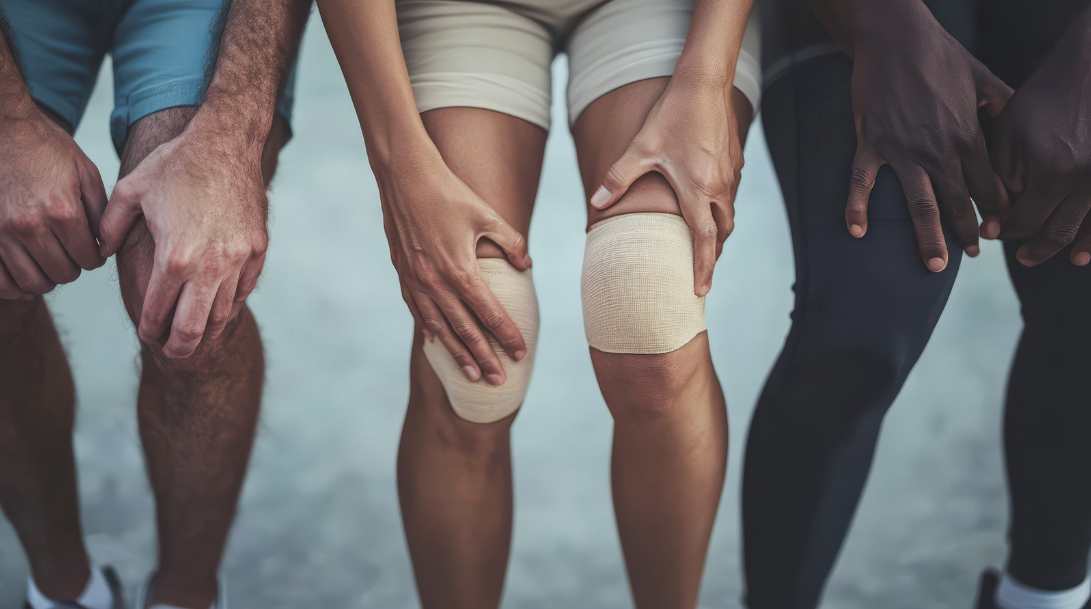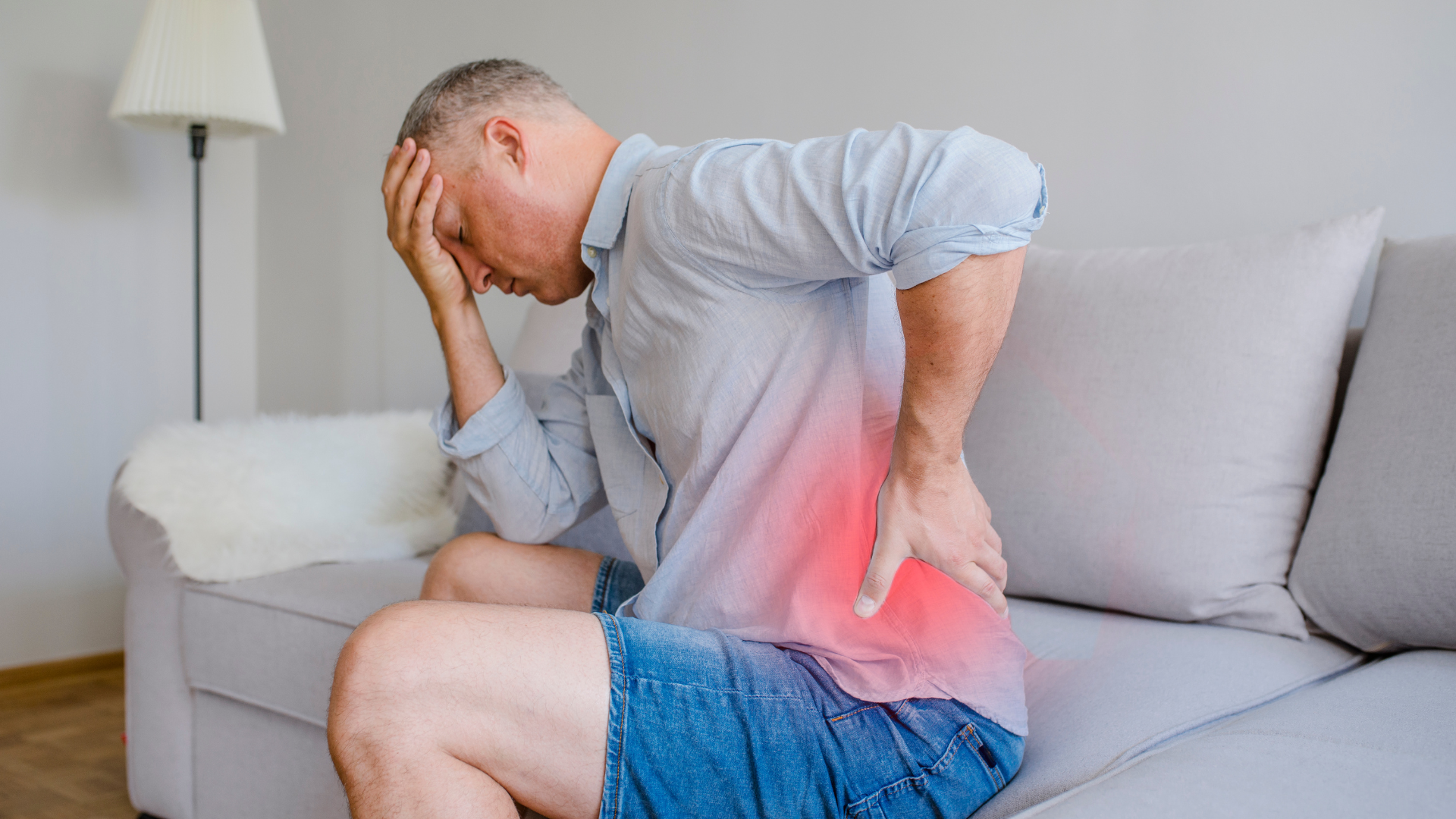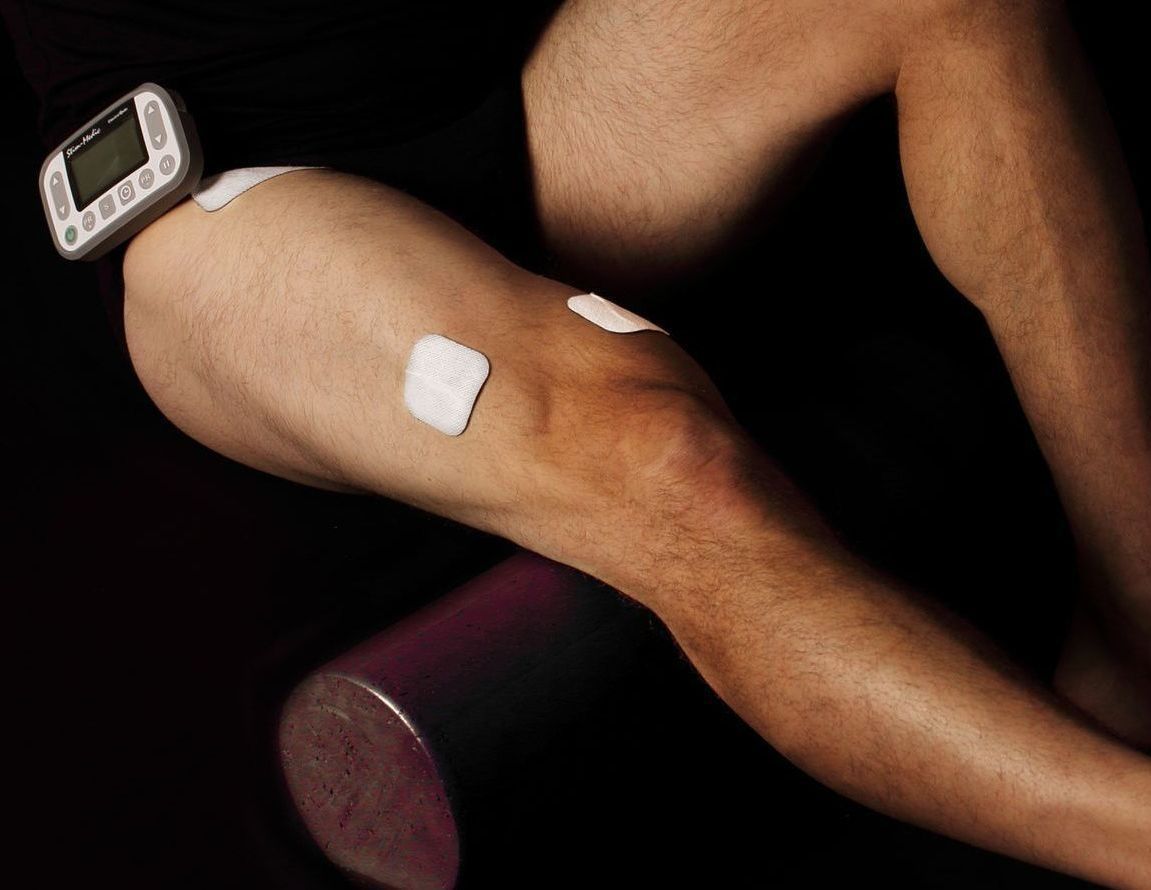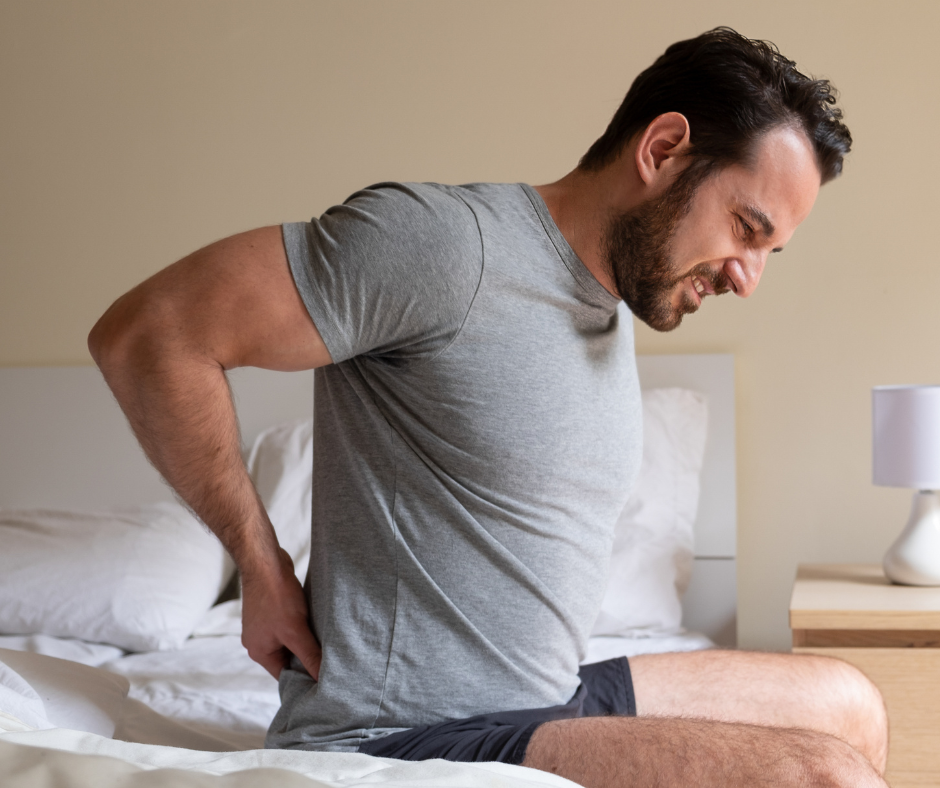SET Magazine
Articles on Electrotherapy

Non-pharmacological strategies are taking on a growing place in pain management. In this context, transcutaneous electrical nerve stimulation, commonly known as TENS, is drawing renewed attention. Despite more than fifty years of research, its clinical effectiveness continues to provoke debate. Yet recent evidence shows that when this modality is properly understood and correctly applied, it can genuinely contribute to pain relief and to improved functional participation. For clinicians, understanding the mechanisms underlying TENS and the factors that shape its effectiveness allows for more accurate support of patient decision making and helps promote treatment adherence. 1- Back to basics, the gate control theory TENS is based on a concept introduced in the 1960s: the gate control theory proposed by Melzack and Wall. This model transformed the understanding of pain by demonstrating that nociceptive signals do not travel directly from the periphery to the brain. Rather, they pass through a modulatory center within the spinal cord, where they can be either amplified or attenuated. When a mild electrical current is applied to the skin, TENS activates nerve fibres associated with tactile and pressure sensations. These fibres conduct information more rapidly than nociceptive fibers, and their activation contributes to the “closing of the gate” to incoming pain signals, thereby reducing the amount of nociceptive input that reaches the brain. Most individuals perceive a comfortable tingling or vibrating sensation beneath the electrodes. This sensation reflects the activity of fibers that temporarily inhibit the transmission of pain impulses. In essence, TENS diminishes nociceptive signaling before the brain can interpret it. 2- Endorphin release The effects of TENS extend beyond the spinal gate. Electrical stimulation also elicits a chemical response, prompting the brain and spinal cord to release endogenous analgesic substances such as endorphins. These molecules act on the same receptors targeted by certain opioid medications, yet without producing their adverse effects. Research by Vance and colleagues indicates that the mechanisms engaged by TENS vary according to stimulation frequency. Low-frequency TENS promotes the release of endorphins, producing a more generalized and longer-lasting analgesic effect. High-frequency TENS, in contrast, acts on distinct neural circuits that inhibit pain more rapidly. Together, these mechanisms support the nervous system in regaining partial control over pain, which helps explain why some individuals experience relief that persists after the stimulation session. 3- Why stydy results vary Studies and systematic reviews on TENS frequently report heterogeneous findings. This variability largely reflects differences in how the modality is applied. Parameters such as intensity, frequency, duration, electrode placement and individual patient characteristics all influence treatment outcomes. These sources of variation help explain why some trials demonstrate marked benefits while others remain inconclusive. Intensity consistently emerges as the most critical parameter. For TENS to be effective, the stimulation must be sufficiently strong to generate a distinct yet comfortable sensation. If the intensity is too low, it will not activate the spinal gating mechanism nor promote the release of endogenous endorphins. Clinicians typically advise patients to increase the current until a stable, non-painful tingling is perceived, and to readjust it whenever the sensation diminishes. With repeated use, the nervous system may gradually adapt to stimulation, which can reduce its analgesic effect. Modifying the frequency, duration, or electrode placement often helps re-establish an adequate therapeutic response. Patient adherence is equally crucial. TENS is not a modality that can be prescribed and then left unattended. Individuals who understand when and how to use their device generally adjust the stimulation more effectively and obtain more meaningful outcomes. Conversely, insufficient instruction or follow-up often results in early discontinuation, which can be mistakenly interpreted as a lack of therapeutic efficacy. 4- What recent research shows Recent studies offer more compelling evidence of TENS effectiveness when the modality is applied appropriately. A 2022 meta-analysis conducted by Johnson and colleagues reported significant pain reduction across several conditions, including postoperative pain, knee osteoarthritis, chronic low back pain, diabetic neuropathy and fibromyalgia. In a separate study involving women with fibromyalgia, Vance and his team observed that participants who experienced improvement during the initial session were also those who showed the greatest benefit after several weeks of treatment. This finding suggests that early response may serve as a predictor of longer-term outcomes and underscores the importance of early follow-up and professional support. Together, these results indicate that TENS can be effective when intensity, frequency and clinical guidance are optimally aligned. 5- The clinician's role Although TENS can be used autonomously, its effectiveness relies heavily on the education and support provided by health professionals. The clinician must first assess whether TENS is suitable for the patient’s clinical presentation. Clinicians also play a central role in shared decision making. They outline the expected benefits, the limitations and the possibility that relief may be partial or temporary, thereby helping patients develop realistic expectations and reinforcing therapeutic trust. In addition, clinicians guide patients in electrode placement, in adjusting intensity and frequency and in identifying the most appropriate moments to use the device. Ultimately, TENS achieves its full therapeutic value when integrated into an active and collaborative clinician–patient relationship. 6- A tool for autonomy and participation When integrated into a multimodal treatment plan, TENS offers patients a concrete means of influencing their pain. This sense of control contributes meaningfully to adaptation and overall well-being. Although TENS does not replace core interventions such as exercise, rehabilitation or psychological approaches, it serves as a complementary modality that helps patients remain active. By supporting patients in understanding how TENS functions and how to adjust its parameters, clinicians foster autonomy and strengthen shared decision making. Ultimately, understanding TENS involves guiding patients toward informed choices that enhance their autonomy and their capacity to live well despite pain. References Travers, M. J., O’Connell, N. E., Tugwell, P., Eccleston, C., & Gibson, W. (2020). Transcutaneous electrical nerve stimulation (TENS) for chronic pain: The opportunity to begin again. The Cochrane Database of Systematic Reviews, 2020(4), ED000139. https://doi.org/10.1002/14651858.ED000139 Johnson, M. I. (2021). Resolving long-standing uncertainty about the clinical efficacy of transcutaneous electrical nerve stimulation (TENS) to relieve pain: A comprehensive review of factors influencing outcome. Medicina, 57(4), 378. https://doi.org/10.3390/medicina57040378 Johnson, M. I., Paley, C. A., Jones, G., Mulvey, M. R., Wittkopf, P. G., & Eardley, W. J. (2022). Efficacy and safety of transcutaneous electrical nerve stimulation (TENS) for acute and chronic pain in adults: A systematic review and meta-analysis of 381 studies (BMJ Open 2022;12:e051073). BMJ Open, 12(12), e051073. https://doi.org/10.1136/bmjopen-2021-051073 Vance, C. G. T., Dailey, D. L., Chimenti, R. L., Van Gorp, B. J., Crofford, L. J., & Sluka, K. A. (2022). Using TENS for pain control: Update on the state of the evidence. Medicina, 58(10), 1332. https://doi.org/10.3390/medicina58101332 Vance, C. G. T., Zimmerman, M. B., Dailey, D. L., Rakel, B. A., Geasland, K. M., Chimenti, R. L., Williams, J. M., Golchha, M., Crofford, L. J., & Sluka, K. A. (2021). Reduction in movement-evoked pain and fatigue during initial 30-minute transcutaneous electrical nerve stimulation treatment predicts TENS responders in women with fibromyalgia. Pain, 162(5), 1545–1555. https://doi.org/10.1097/j.pain.0000000000002144 Vance, C. G. T., Dailey, D. L., Rakel, B. A., & Sluka, K. A. (2014). Using TENS for pain control: The state of the evidence. Pain Management, 4(3), 197–209. https://doi.org/10.2217/pmt.14.13

Occupational therapy plays a key role in the rehabilitation of individuals living with injury, chronic pain, or functional limitations. Its goal extends beyond restoring physical capacity - it seeks to help individuals regain an active and meaningful role in their daily, social, and professional activities. To achieve this, occupational therapists rely on a holistic approach that considers the physical, cognitive, and emotional dimensions of health (OEQ, 2024). Recent research highlights the importance of this biopsychosocial view of pain. Lagueux et al. (2018) showed that occupational therapy is distinct in its occupation-based focus, centered on engagement and participation rather than merely on symptom reduction. More recently, Bouchard et al. (2025) demonstrated that occupational therapists actively contribute to the development of self-management skills among individuals living with chronic pain by helping them experiment, self-regulate, and integrate concrete strategies into their daily lives. In this context, electrotherapy is emerging as an interesting complementary tool. Although it has historically been associated with physiotherapy, its gradual integration into occupational therapy practice supports pain management, facilitates mobility, and promotes client autonomy. Recent research underscores the importance of viewing pain through a biopsychosocial lens. According to Lagueux et al. (2018), occupational therapy stands out for its occupation-based approach, focusing on engagement and participation rather than simply on symptom relief. Building on this, Bouchard et al. (2025) demonstrated that occupational therapists play a key role in helping individuals with chronic pain develop self-management skills through guided experimentation, self-regulation, and the integration of practical strategies into everyday life. In this context, electrotherapy has become an increasingly relevant complementary tool. Although it has long been linked to physiotherapy, its gradual adoption in occupational therapy helps manage pain, promote movement, and enhance client independence. Occupational therapy: a client-centered, holistic approach Occupational therapy is grounded in an integrative understanding of health and human functioning. Lagueux et al. (2023) reported that Quebec occupational therapists adopt an occupation-centered approach combining education, work rehabilitation, energy conservation, and activity modification to support participation. This diversity of interventions illustrates the profession's adaptability in addressing the complexity of chronic pain. When an occupational therapist supports an injured client, they focus not only on the physical impact but also on its effects on mood, motivation, and social participation. Assessment often includes aspects such as time management, role balance, effort tolerance, and pain perception. This holistic vision facilitates the integration of complementary tools - such as electrotherapy - within the rehabilitation process. Here’s how! Electrotherapy to support mobility and activity resumption Electrotherapy refers to the use of electrical currents for therapeutic purposes. The most common modality is TENS (Transcutaneous Electrical Nerve Stimulation), primarily aimed at reducing pain (Johnson et al., 2022). Evidence suggests that its short-term analgesic effects are comparable to, or even greater than, those achieved with first-line medications (Arnold, 2020). In occupational therapy, electrotherapy can serve as a supportive tool for mobilization or the resumption of functional activities. For example, it can help a client reduce pain associated with movement, maintain a working posture, or complete an exercise without exceeding their limits. By reducing pain, TENS promotes active participation and helps sustain the level of activity needed to progress with the therapist's intervention plan (Dailey et al., 2020). This modality becomes especially meaningful when taught as a self-management tool. By learning to use it safely and appropriately, clients gain autonomy and can continue treatment at home, consolidating therapeutic gains and preventing setbacks related to pain or inactivity. Autonomy as a therapeutic goal Client autonomy remains at the heart of occupational therapy practice. According to Bouchard et al. (2025), occupational therapists promote pain self-management through experiential interventions that develop three key competencies: understanding one's condition, effectively using self-management strategies, and self-regulating to sustain participation in meaningful activities. Functional electrotherapy aligns with this philosophy. When properly supervised, it becomes an extension of the therapist's intervention plan. It encourages clients to experiment, observe their reactions, and adjust their use according to their needs. This sense of responsibility enhances engagement in the rehabilitation process and strengthens confidence in one's abilities. Moreover, learning to manage pain through a tangible tool such as TENS can positively influence motivation. The client becomes an active participant in their recovery rather than a passive observer of their symptoms. This approach reinforces the coherence between different therapeutic components - functional exercises, energy management, cognitive strategies, and the gradual return to meaningful activities. Energy management: a pillar of occupational therapy Energy management helps prevent fatigue, avoid overexertion cycles, and maintain consistent participation. Lagueux et al. (2023) found that energy conservation and postural hygiene are among the most frequently used interventions by occupational therapists in Quebec. These strategies promote better activity planning and reduce pain flare-ups. Many clients living with chronic pain or persistent fatigue tend to alternate between periods of overactivity and avoidance. Occupational therapists help them identify early warning signs - such as increasing pain, reduced concentration, irritability, or fatigue - to adjust their pace before reaching a point of decompensation. Tools such as perceived exertion scales or activity logs are often used to quantify and regulate energy expenditure. Combined with electrotherapy, this approach can improve effort tolerance. For instance, a client may use stimulation before or after certain tasks to reduce pain, allowing for more consistent and balanced activity levels. Conversely, it may be used during an activity if it triggers pain or movement-related fear. Energy management is not only about reducing fatigue - it also promotes self-awareness, planning, and adaptability. It aligns perfectly with the occupational therapy philosophy centered on autonomy and relapse prevention. Interdisciplinary collaboration in client care The integration of electrotherapy and other physical modalities should occur within an interdisciplinary framework, consistent with the care model recommended by the OEQ and the guidelines of the International Association for the Study of Pain (IASP) . Interdisciplinary teamwork ensures coherence across interventions and enhances client safety. In collaboration with physiotherapy professionals, the occupational therapist can ensure that the modality is used appropriately, without contraindications, and in alignment with the overall treatment goals. Team meetings and clinical discussions enable practitioners to adjust interventions based on observed progress and to harmonize messaging for the client. This integrated approach enhances care quality, prevents duplication, and ensures continuity across the physical, cognitive, and psychosocial aspects of rehabilitation. In short, interdisciplinarity gives full meaning to the concept of holistic care. Toward an integrative and proactive occupational therapy Electrotherapy expands the range of tools available to occupational therapists to support rehabilitation. When used thoughtfully - tailored to the client's profile and integrated into a collaborative care plan - it can significantly reduce pain, improve mobility, and strengthen self-confidence. An integrative approach combining electrotherapy, education, self-management, and interdisciplinary collaboration reflects the current vision of a proactive occupational therapy practice oriented toward sustainable health and participation. It aligns with the direction of the Ordre des Ergothérapeutes du Québec, which promotes evidence-based, person-centered practice. Ultimately, electrotherapy stands out as a relevant complementary modality within a comprehensive therapeutic approach. When used judiciously, it supports the core principles of the profession: autonomy, occupation, collaboration, and empowerment. *** The integration of electrotherapy into occupational therapy practice should be based on close interdisciplinary collaboration, particularly with physiotherapy professionals. In accordance with the ethical principles of the Ordre des ergothérapeutes du Québec, occupational therapists must act within their scope of practice and ensure that the use of physical modalities such as TENS is consistent with the overall treatment plan developed by the care team. This collaborative approach supports client safety, the complementarity of interventions, and respect for each professional’s scope of practice, while enhancing the quality and continuity of care provided.*** REFERENCES Arnold, M. J. (2020). Management of acute pain from non–low back musculoskeletal injuries: Guidelines from AAFP and ACP. American Family Physician, 102 (11), 697–698. Bouchard, S., Choinière, M., Masse, J., Labourot, J., & Vachon, B. (n.d.). Empowering people living with chronic pain to use self-management strategies in their daily lives: Understanding occupational therapy practices. Disability and Rehabilitation, 0 (0), 1–15. https://doi.org/10.1080/09638288.2025.2540069 Dailey, D. L., Vance, C. G. T., Rakel, B. A., Zimmerman, M. B., Embree, J., Merriwether, E. N., Geasland, K. M., Chimenti, R., Williams, J. M., Golchha, M., Crofford, L. J., & Sluka, K. A. (2020). Transcutaneous electrical nerve stimulation reduces movement-evoked pain and fatigue: A randomized, controlled trial. Arthritis & Rheumatology, 72 (5), 824–836. https://doi.org/10.1002/art.41170 Johnson, M. I., Paley, C. A., Jones, G., Mulvey, M. R., & Wittkopf, P. G. (2022). Efficacy and safety of transcutaneous electrical nerve stimulation (TENS) for acute and chronic pain in adults: A systematic review and meta-analysis of 381 studies (the meta-TENS study). BMJ Open, 12 (2), e051073. https://doi.org/10.1136/bmjopen-2021-051073 Lagueux, É., Dépelteau, A., & Masse, J. (2018). Occupational therapy’s unique contribution to chronic pain management: A scoping review. Pain Research & Management, 2018, 5378451. https://doi.org/10.1155/2018/5378451 Lagueux, É., Masse, J., Pagé, R., Marin, B., & Tousignant-Laflamme, Y. (2023). Management of chronic pain by occupational therapists: A description of practice profile. Canadian Journal of Occupational Therapy / Revue Canadienne d’Ergothérapie, 90 (4), 384–394. https://doi.org/10.1177/00084174231162709 Masse, J., Nielsen, S. S., Christensen, J. R., Skou, S. T., Côté, J., Saunders, S., Lagueux, É., Boulanger, A., Perez-Martinez, J., Lussier, M., & Pagé, M. G. (2023). Co-designing a Canadian adaptation of a lifestyle-oriented intervention aimed to improve daily functioning of individuals living with chronic pain: A multi-method study protocol of REVEAL(OT) Canada. Frontiers in Rehabilitation Sciences, 4, 1281680. https://doi.org/10.3389/fresc.2023.1281680 Ordre des ergothérapeutes du Québec (OEQ). (n.d.). What is occupational therapy? Retrieved October 21, 2025, from https://www.oeq.org/m-informer/qu-est-ce-que-l-ergotherapie.html

September 2025 marks not only the return to school, but also the start of a new sports season. Whether it’s a training camp, a marathon, or a triathlon, many individuals fully commit to their goals. The body is pushed to its limits—sometimes beyond them. The result: injuries. Why Do Sports Injuries Happen? Most often, they are linked to: A rapid increase in training intensity. Inadequate recovery: insufficient sleep, lack of rest days, absence of stretching. Overexertion during a challenge or competitive training (marathon, XMan Race, CrossFit, etc.). The Most Common Injuries The Knee Patellofemoral pain syndrome: pain around the kneecap, common among long-distance runners. Anterior cruciate ligament (ACL) injury: often occurs during sudden pivots, rapid changes of direction, jumps, or abrupt stops. Shin splints (medial tibial stress syndrome): pain along the shin, frequently associated with a rapid increase in distance or workload. The Ankle Achilles tendinitis: common in runners and endurance athletes (basketball, volleyball, soccer). Muscles and Bones Muscle strains/tears: occur during high-intensity efforts, sprints, or explosive movements. Stress fractures: caused by repetitive overload, often affecting the tibia or foot. The Role of Biomechanics Injuries are not only the result of training intensity or overexertion. They may also be influenced by the body’s natural biomechanics, such as: Flat feet or excessively high arches. Muscle stiffness or, conversely, hyperlaxity. Poor joint alignment. Weakness in key muscle chains (core, glutes, stabilizers). Deficient or excessive mobility. Solutions: Stimulating and Strengthening the Body The good news? There are effective strategies to prevent injuries—or to optimize recovery when they do occur—particularly through muscle stimulation and targeted training: Strengthening exercises : building strength and endurance, correcting instability by activating the right muscle groups. Motor relearning : enhancing muscular control and joint stability. Capacity optimization : correcting imbalances, progressing through rehabilitation, and unlocking the body’s full potential. Key takeaway: a well-prepared, balanced, and rested body performs better—and is less prone to injury.

Stay Active This Summer: Take Control with Self-Care Summer is the perfect time to explore, travel, get moving, and finally tackle all those projects that were on hold. Whether you're road-tripping, hiking, renovating, or simply soaking up the sun, this vibrant season invites us to push our limits and enjoy life to the fullest. But with increased activity often comes unexpected physical strain. Long hours on the road, repetitive movements, and intense efforts can quickly lead to discomfort or pain. When that happens, your body is sending a clear message: it’s time to act—before it disrupts your plans. The good news? You can take care of yourself right from home, without putting your summer on pause. Self-Care: Your Best Ally for an Active Summer Self-care is about listening to your body and taking proactive steps to maintain your well-being. It's a way to stay in control, especially when pain tries to slow you down. One of the most effective and user-friendly tools for self-care? The TENS unit. Why Choose TENS This Summer? TENS (Transcutaneous Electrical Nerve Stimulation) is a proven, drug-free method to relieve pain. It’s safe, easy to use, and fits perfectly into an active lifestyle. Here’s why it’s worth bringing along on your summer adventures: Fast and effective relief : Feel better in minutes, with results lasting between 2 to 8 hours. 100% natural, medication-free solution : No side effects—just relief. Discreet and portable : Wear it under your clothes while you go about your day. Stay active without compromise : Keep doing what you love, at your own pace. Supports professional care : Complements physiotherapy and rehabilitation treatments. Effective for various pain types : Including musculoskeletal, discogenic, and postural pain. Easy to use: no steep learning curve — you can start using it today, with guidance from healthcare professionals. Personalized and proactive pain management : Empower yourself to respond quickly and consistently. Listen to Your Body—and Keep Moving Pain doesn’t have to hold you back. With the right tools and a bit of guidance, you can enjoy all that summer has to offer—without sacrificing your comfort or well-being. By adding TENS to your daily routine, you’re taking a step toward freedom, movement, and greater autonomy over your health. Need advice or personalized support? Our experts are here to help you choose the right device and guide you in using it effectively. Get in touch with us today!

Imagine living with constant pain. It never fully leaves you. Sometimes dull, sometimes sharp, it colours your days and haunts your nights. This persistent discomfort keeps you from moving as you’d like, working, sleeping, or simply enjoying a quiet moment. Over time, you become more tired, more irritable, more withdrawn. You feel alone, discouraged, and sometimes even misunderstood. What if it’s not just the pain... but everything that comes with it? This scenario, far from rare, reflects the daily reality of many people living with chronic pain. What is less often acknowledged — even in healthcare settings — is how deeply mental health and physical pain intertwine. They interact, feed into each other, and sometimes become entangled in a vicious cycle that is hard to break. The connection between chronic pain and mental health conditions such as anxiety, depression, or post-traumatic stress is now well documented. Yet, as Bhatt and colleagues (2024) point out, “there is often no explicit recognition of the role of comorbidities and the bidirectional relationship between mental health and pain.” Comorbidities refer to the simultaneous presence of multiple health conditions that can interact and reinforce each other. In this case, it refers to the coexistence of chronic pain and mental health disorders. This means that even when both issues are present, they are often treated separately, as if unrelated. And yet… Chronic pain increases the risk of developing depressive, anxiety, or sleep disorders. Poor mental health can amplify pain, reduce physical and emotional tolerance, and interfere with treatment. Together, they can weaken motivation, reduce mobility, impact social relationships, and even jeopardize employment. This combination—often referred to as a dual burden—is more than a sum of symptoms: it is a state of prolonged vulnerability that demands urgent attention. A double burden still too often overlooked The combination of chronic pain and psychological distress is often invisible to others—and unfortunately also to healthcare systems. Too often, therapeutic approaches are siloed: physical pain is treated on one side, mood disorders on the other, with no bridge between the two. Yet the data is clear: these problems are not merely coexisting—they are interconnected. For instance, individuals with bipolar disorder are twice as likely to experience chronic pain compared to the general population (Nicholl et al., 2014). These individuals are also at greater risk of social and occupational exclusion. Indeed, those affected by this dual reality contribute disproportionately to higher rates of absenteeism (frequent work absences) and presenteeism (being at work but with reduced effectiveness). Despite this, as Bhatt et al. emphasize, “pain is not typically assessed in individuals with mental health disorders,” and the reverse is also true: many people living with chronic pain suffer from undiagnosed, unrecognized, and therefore untreated psychological distress. When only one side of the equation is treated Ignoring one of the two dimensions—mental or physical—risks repeated therapeutic failures. An intervention plan focused solely on physical activity, without accounting for depressive symptoms, may be poorly received or difficult to follow. Conversely, a psychological therapy that neglects persistent and disabling pain may seem disconnected from the person’s lived reality. This observation may seem discouraging, but it also points to solutions. Pathways out of the vicious cycle Breaking the spiral between pain and mental health is not easy, but it is possible. And most importantly: it is not just a matter of individual willpower. It is a collective, clinical, and societal challenge. Here are some tangible strategies that can truly make a difference: 1.Think in terms of interactions, not silos The first step is to explicitly recognize the link between pain and mental health. This means training healthcare professionals to ask the right questions, approach sensitive topics without judgment, and use tools that take the whole person into account. For example, prognostic tools can help rehabilitation clinicians identify biopsychosocial factors that influence recovery, including mood, motivation, fear of movement, or social support. (Tousignant-Laflamme et al., 2023) 2. Promote integrated and interdisciplinary care The most effective care often comes from bringing together multiple perspectives: physiotherapy, psychology, medicine, social work, etc. These combined approaches allow for intervention on the body, emotional experience, and life context. This is the essence of the biopsychosocial approach, which seeks to understand how these three spheres interact in each individual. It is especially relevant for those living with chronic pain, as their situation cannot be reduced to a simple injury or isolated mental disorder. 3.Encourage practical and accessible strategies Simple interventions can have a meaningful impact on well-being, especially when they are supported and personalized: Gradual and adapted physical exercise Body awareness programs (yoga, Tai Chi, breathing exercises) Relaxation or mindfulness activities Cognitive-behavioural therapies to better manage pain and emotions Pain education, to demystify it and regain agency These approaches are still underused, often due to lack of training or resources, but are supported by scientific literature. 4.Actively combat stigma Too often, individuals living with chronic pain or psychological disorders feel judged, ignored, or dismissed. This stigma prevents them from seeking help or accessing adequate care. (Roughan et al., 2021) Awareness campaigns, training for healthcare workers, and personal testimonies can help break isolation and foster a more compassionate care culture. 5.Acknowledge the importance of social roles and work Work is not just a means of earning a living: it contributes to identity, self-esteem, and social connection. Bhatt et al. emphasize that good working conditions can have a protective effect on mental health, even in the presence of pain. This implies supporting gradual return-to-work plans, adapting tasks when needed, and valuing the person’s other social roles (parent, caregiver, volunteer…). (Bhatt et al., 2024) A broader perspective, a more humane response Chronic pain is not just a physical symptom. And psychological distress is not healed through talk alone. These are complex realities, deeply rooted in lived experience, the body, and life context. Attempting to treat one without the other risks failure. But acknowledging their interaction opens the door to more comprehensive, fair, and effective care. Sources: · Bhatt, K., Palomares, A. C., Jutila, L., Rohde, I., Forget, P., & Societal Impact of Pain Platform (SIP). (2024). The pain and mental health comorbidity. Epidemiology and Psychiatric Sciences, 33, e46. https://doi.org/10.1017/S204579602400057X · Nicholl, B. I., Mackay, D., Cullen, B., Martin, D. J., Ul-Haq, Z., Mair, F. S., Evans, J., McIntosh, A. M., Gallagher, J., Roberts, B., Deary, I. J., Pell, J. P., & Smith, D. J. (2014). Chronic multisite pain in major depression and bipolar disorder : Cross-sectional study of 149,611 participants in UK Biobank. BMC Psychiatry, 14, 350. https://doi.org/10.1186/s12888-014-0350-4 · Roughan, W. H., Campos, A. I., García-Marín, L. M., Cuéllar-Partida, G., Lupton, M. K., Hickie, I. B., Medland, S. E., Wray, N. R., Byrne, E. M., Ngo, T. T., Martin, N. G., & Rentería, M. E. (2021). Comorbid Chronic Pain and Depression : Shared Risk Factors and Differential Antidepressant Effectiveness. Frontiers in Psychiatry, 12, 643609. https://doi.org/10.3389/fpsyt.2021.643609 · Tousignant-Laflamme, Y., Houle, C., Longtin, C., Gérard, T., Lagueux, E., Perreault, K., Beaudry, H., Tétreault, P., Blanchette, M.-A., & Décary, S. (2023). Prognostic factors specific to work-related musculoskeletal disorders : An overview of recent systematic reviews. Musculoskeletal Science and Practice, 66, 102825. https://doi.org/10.1016/j.msksp.2023.102825







